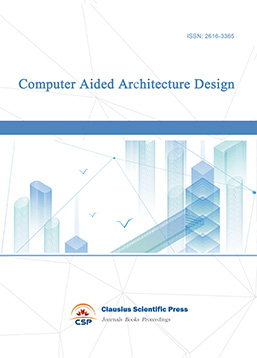Ergonomic-Based Design for Enterprise Office Space Planning
DOI: 10.23977/jceup.2023.050607 | Downloads: 96 | Views: 1524
Author(s)
Dancen Wang 1
Affiliation(s)
1 Northeastern University, Shenyang, China
Corresponding Author
Dancen WangABSTRACT
This paper explores the application background and value of ergonomics in enterprise office space planning and design. It analyzes the role of ergonomic principles in improving employee work efficiency, reducing employee fatigue and occupational risks, enhancing corporate image and culture, and reducing costs. Based on the basic principles of ergonomics, this paper proposes opinions on the content and function of office space and the basic elements of ergonomic theory in office space planning and design. The requirements and standards for enterprise office space planning are summarized, and the shortcomings and problems of current enterprise office design in terms of ergonomic principles are pointed out. Based on the results analysis and problem analysis, this paper proposes the development direction and suggestions for the application of ergonomics in enterprise office space planning and design in the future.
KEYWORDS
Ergonomics, office space planning and design, employee efficiency, employee health and safety, cost reductionCITE THIS PAPER
Dancen Wang, Ergonomic-Based Design for Enterprise Office Space Planning. Journal of Civil Engineering and Urban Planning (2023) Vol. 5: 44-50. DOI: http://dx.doi.org/10.23977/jceup.2023.050607.
REFERENCES
[1] Liu J.C. (2019) Research on humanized design in office space. Nanfangnongji, 50 (16):230-231.
[2] Haims M. C., & Carayon P. (1998) Theory and practice for the implementation of "in-house", continuous improvement participatory ergonomic programs. Applied Ergonomics, 29(6), 461–472. doi: 10.1016/s0003-6870(98) 00012-x
[3] Chilton J. J., & Baldry D. (1997) The effects of integrated workplace strategies on commercial office space. Facilities, 15(7/8), 187–194. Doi: 10.1108/02632779710168227
[4] Wilson J. R. (2000) Fundamentals of ergonomics in theory and practice. Applied Ergonomics, 31(6), 557–567. doi: 10.1016/s0003-6870(00)00034-x
[5] Chen S. (2015) Office Space Design Research in the SIPPR Engineering Group Co., Ltd. Hebei University of Technology.
[6] Liu Z. H. (2017) Research on the human factors engineering of motor function rehabilitation system for upper limb exoskeleton. Donghua University.
[7] Hua S. (2005) Suggestions on the content arrangement of "Basic Normal Human Body". Chinese Journal of Anatomy, (02):126-148.
[8] Fang C. L., & Wei Y. (1997) Research Progress of Energy Expenditure of Human Activities. Sport Science and Technology, 2014, 35(06):84-87. DOI:10.14038/j.cnki.tykj.2014.06.034.
[9] Hassanain M. A. (2010) Analysis of factors influencing office workplace planning and design in corporate facilities. Journal of Building Appraisal, 6(4), 183–197. doi:10.1057/jba.2010.22
[10] Brookes M. J., and Kaplan A. (1972) The Office Environment: Space Planning and Affective Behavior. Human Factors: The Journal of the Human Factors and Ergonomics Society, 14(5), 373–391. doi: 10. 1177/ 001872087201400502
[11] Zhou X. L., & Guo J. (2010) Employee satisfaction analysis based on producer surplus theory. Enterprise Economy, No. 361(09):68-70.DOI:10.13529/j.cnki.enterprise.economy.2010.09.038.
[12] Miao J. Z., Yan M. Z., Fang T. T., et al. (2016) The design concept of "open space hierarchical use of multi-functional combination office furniture". Chinese and foreign entrepreneurs, No. 519(01):263.
[13] Duignan K. (2013) Occupational Ergonomics. Theory and Applications. Ergonomics, 56(1), 150–151. doi: 10.1080/ 00140139.2013.768005
[14] Chao S. K. (2012) Firefighting Design of Super High-rise Building. Chongqing Architecture, 11(11):29-31.
| Downloads: | 11907 |
|---|---|
| Visits: | 412085 |
Sponsors, Associates, and Links
-
Journal of Sustainable Development and Green Buildings

-
Landscape and Urban Horticulture

-
Bridge and Structural Engineering

-
Soil Mechanics and Geotechnical Engineering

-
Journal of Municipal Engineering

-
Heating, Ventilation and Air Conditioning

-
Indoor Air Quality and Climate

-
Computer Aided Architecture Design


 Download as PDF
Download as PDF